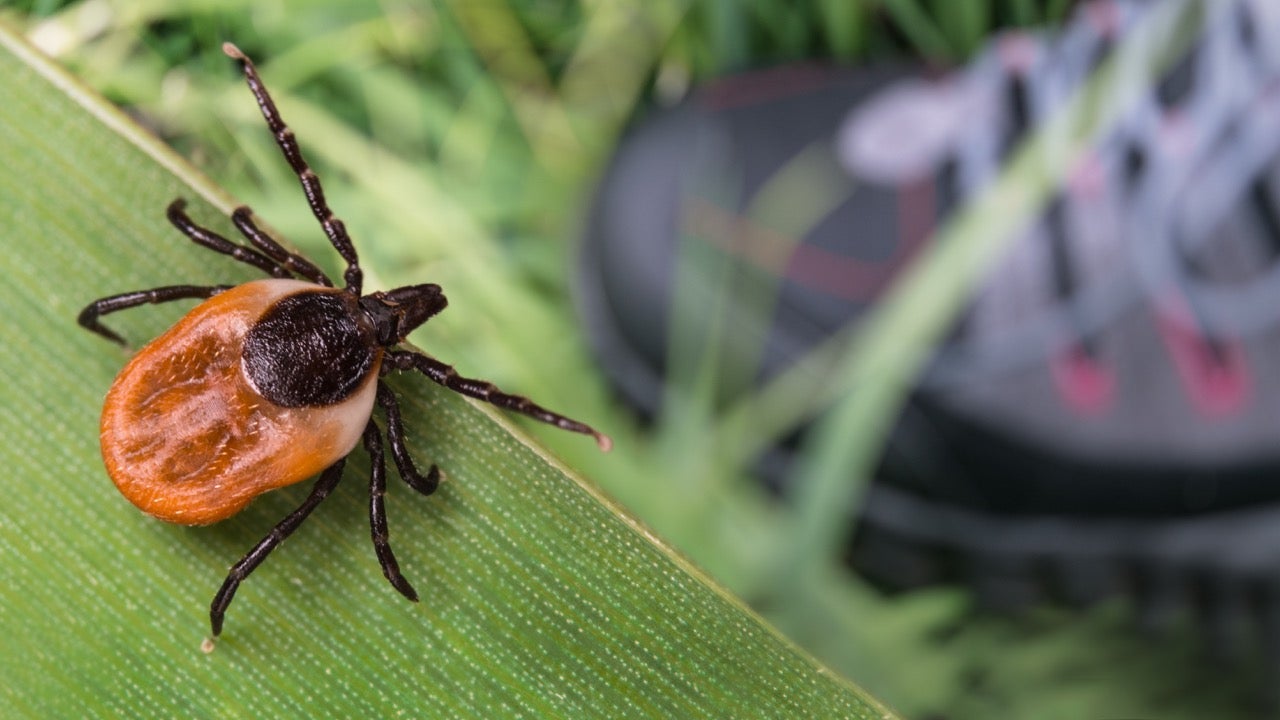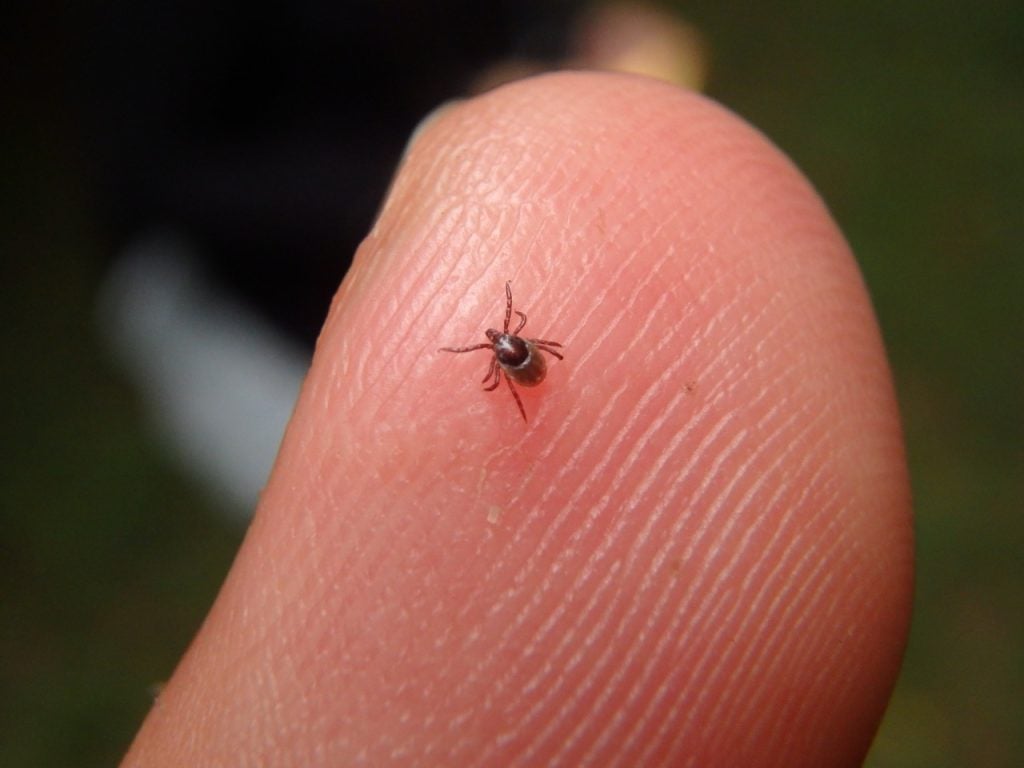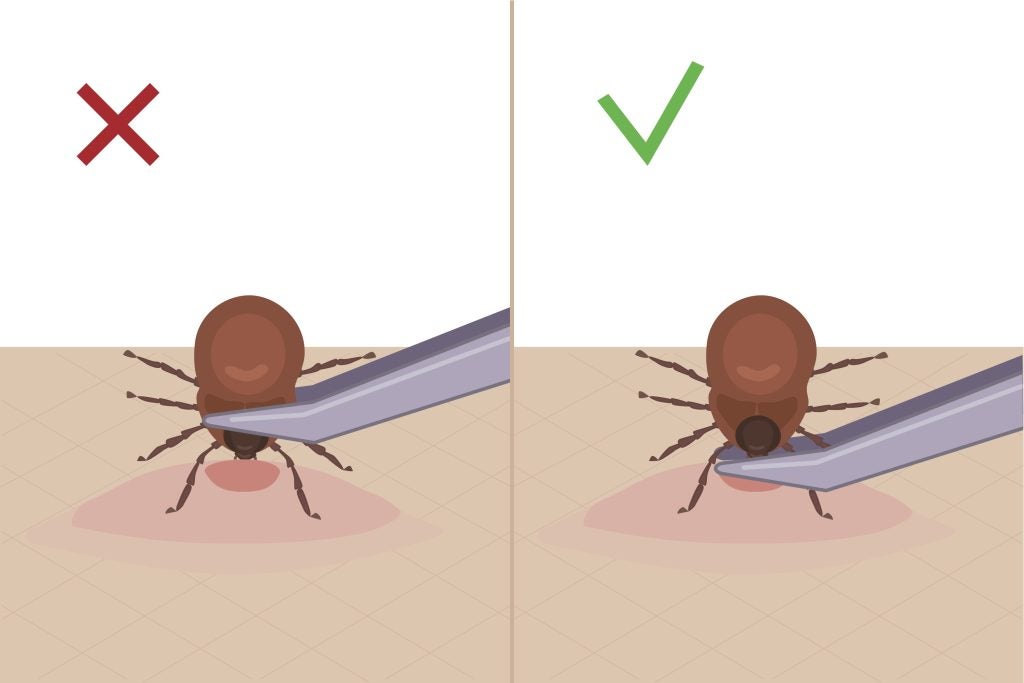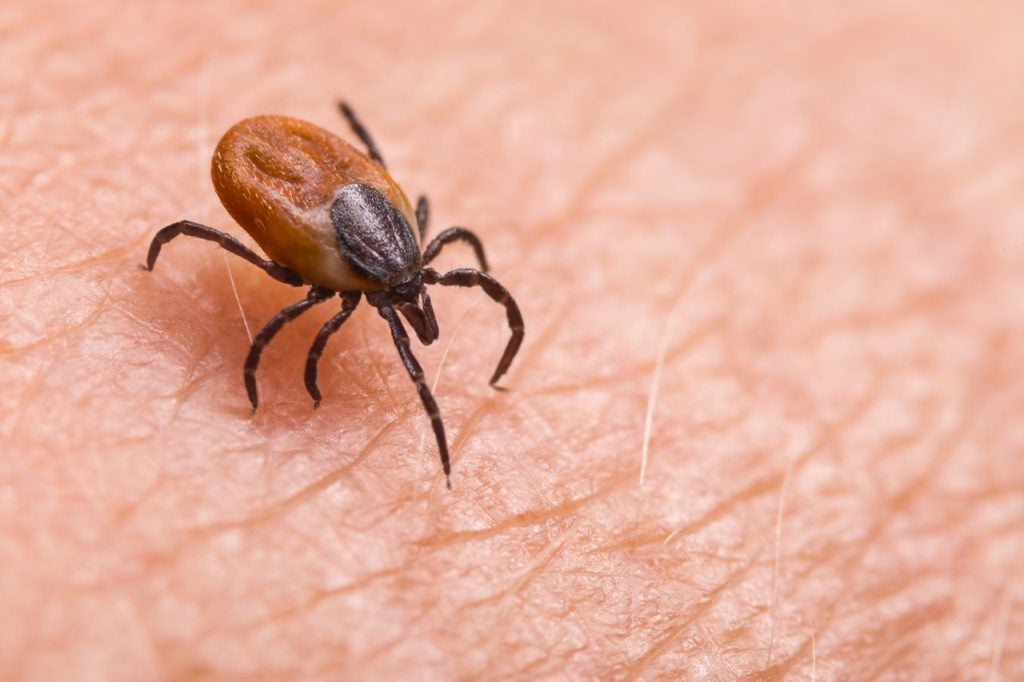
Our Editors independently research, test, and rate what we feel are the best products. We use affiliate links and may receive a small commission on purchases.
When venturing into the outdoors, the threat of tick-borne illnesses cannot be ignored. These tiny arachnids can transmit diseases such as Lyme disease, Rocky Mountain spotted fever, ehrlichiosis, babesiosis, and anaplasmosis, all of which pose serious health risks. However, armed with knowledge and proactive measures, you can significantly reduce these risks and safely enjoy outdoor activities. This comprehensive guide on how to avoid ticks will provide detailed information, prevention strategies, the steps to remove a tick should you get bitten, and the signs and symptoms of tick-borne illnesses. By staying informed and taking preventive actions, you can enjoy nature while safeguarding your health.
How to Avoid Ticks

Dress Strategically to Avoid Ticks
When outdoors, wear long sleeves, long pants, and closed-toe shoes to minimize skin contact with ticks. Tucking pants into socks or boots creates a physical barrier. Light-colored clothing aids in tick detection.
Utilize EPA-Approved Repellents
Apply EPA-approved insect repellents containing DEET or picaridin to exposed skin and clothing. Follow the label instructions and reapply as necessary, especially during prolonged outdoor activities. Use age-specific guidelines for children.
Consider Permethrin Treatment
Enhance tick protection by treating clothing, gear, and outdoor equipment with permethrin. Permethrin is available in various formulations, including sprays, creams, lotions, and treated fabrics. When applied to clothing, gear, or outdoor equipment, permethrin creates a protective barrier, deterring ticks and other insects from coming into contact with the treated surfaces. It remains effective even after multiple washes and can provide long-lasting protection against ticks and other biting insects.
It is important to note that permethrin should not be applied directly to the skin. Instead, it is designed for use on clothing and gear. Follow product instructions carefully and allow sufficient drying time before use.
Conduct Thorough Tick Checks
After being in tick-prone areas, carefully inspect yourself, your companions, and especially your pets for ticks. Perform a comprehensive examination, including hidden areas like the scalp, ears, and armpits. Use fine-tipped tweezers to remove ticks close to the skin’s surface.
Properly Launder Outdoor Attire
Promptly wash outdoor clothing on high heat to eliminate any ticks. If immediate washing is not possible, tumble-dry the clothing on high heat for at least 10 minutes to kill ticks.
Post-Outdoor Showering
Shower within two hours of returning indoors to remove unattached ticks. Conduct a thorough tick check during the shower to ensure no ticks have attached.
Stay Informed
Regularly consult local health departments and reputable websites to stay updated on tick activity and prevalent diseases in your area.
How to Properly Remove Ticks

Incorrect removal techniques, such as squeezing or twisting, can lead to the release of potentially infectious fluids.
To ensure safe and effective tick removal, use a pair of tweezers to grasp the tick as close to the skin’s surface as possible. Take care not to squeeze the tick’s body, as this can cause the release of infectious material. With a firm and steady motion, pull the tick straight upward without twisting or jerking. This helps ensure the tick’s mouthparts are fully removed from the skin.
After tick removal, clean the bite site and your hands with soap and water or an alcohol-based sanitizer. This reduces the chances of infection and helps maintain proper hygiene.
Read our Guide to Tick Removal for more detailed instructions.
Recognize the Signs and Symptoms of Tick-Borne Diseases

Understanding the symptoms associated with tick-borne illnesses is essential for early detection and timely treatment. The most common tick-borne illnesses include:
Lyme Disease: Symptoms may include fever, fatigue, headache, muscle and joint aches, swollen lymph nodes, and a characteristic bull’s-eye rash called erythema migrans. According to the Centers for Disease Control and Prevention (CDC), there were approximately 42,743 confirmed cases of Lyme disease in the United States in 2022.
Rocky Mountain Spotted Fever: Symptoms can include fever, headache, abdominal pain, vomiting, muscle pain, and a spotted rash that usually begins on the wrists and ankles. The CDC reported 6,248 cases of Rocky Mountain spotted fever in 2022.
Ehrlichiosis: Symptoms may include fever, chills, headache, muscle aches, fatigue, and sometimes a rash. In 2019, the CDC reported 951 cases of ehrlichiosis in the United States.
Babesiosis: Symptoms may include fever, chills, fatigue, muscle aches, and dark urine. According to the CDC, there were 2,124 confirmed cases of babesiosis in 2022.
Anaplasmosis: Symptoms may include fever, headache, muscle aches, chills, and fatigue. The CDC reported 7,718 cases of anaplasmosis in 2022.
If you experience any of these symptoms after spending time in tick-prone areas, seek medical attention promptly. Early diagnosis and treatment significantly improve outcomes for tick-borne illnesses. Now that you’ve learned how to avoid ticks, you can minimize the risk of tick bites and associated diseases while enjoying the outdoors. Dress strategically, use EPA-approved repellents, conduct thorough tick checks, and create a tick-resistant environment. Promptly seek medical attention if symptoms arise. Stay informed through reliable sources, such as the CDC’s tick safety website. Embrace nature responsibly while protecting your health.
